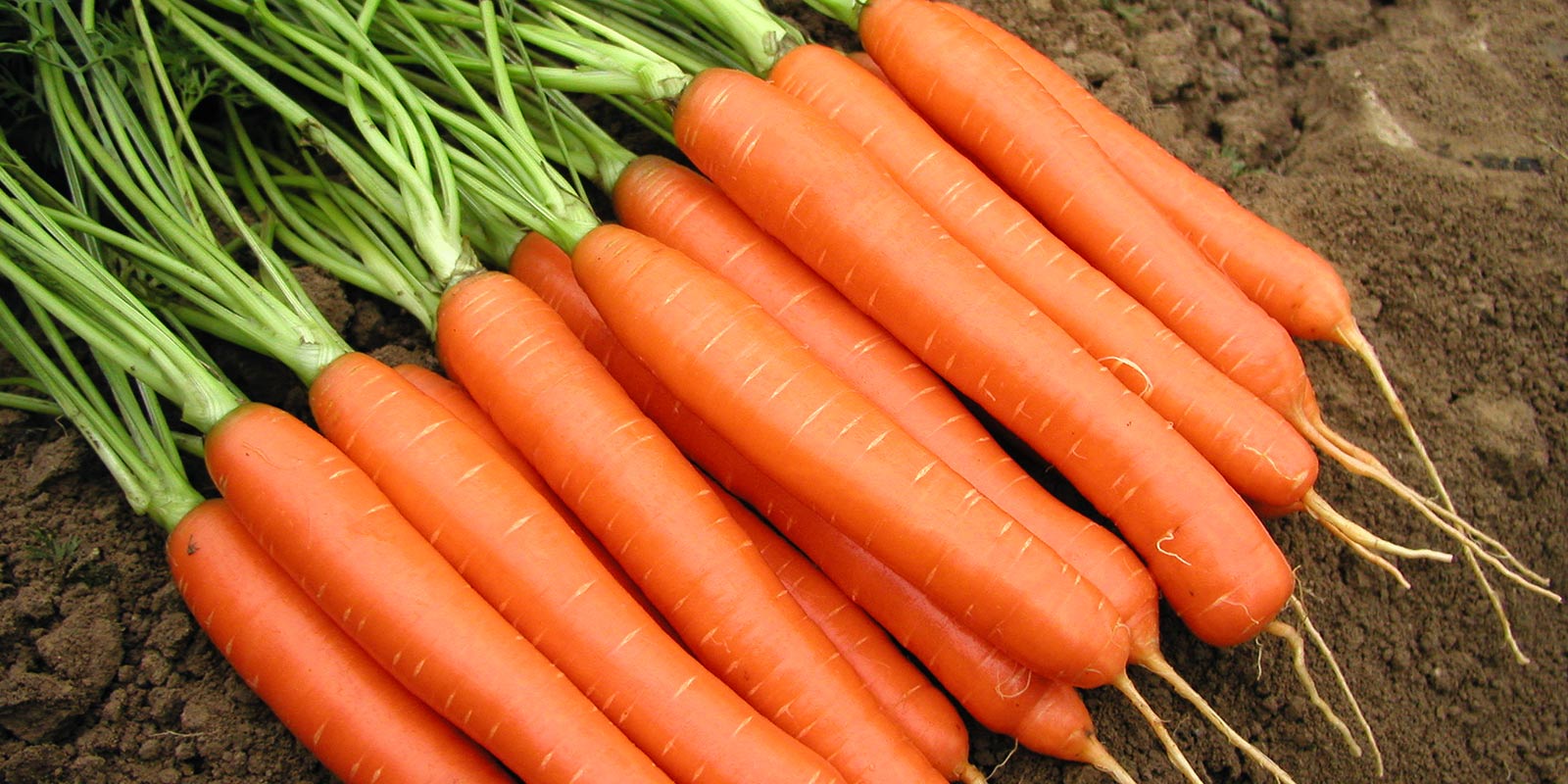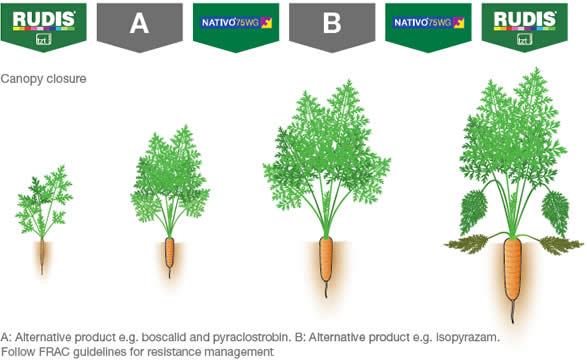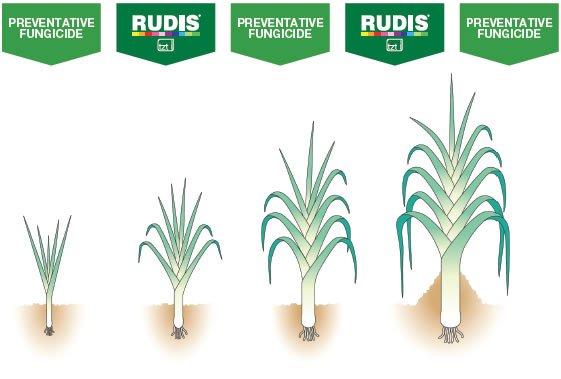Brassicas
Disease control programmes using Rudis and Nativo 75WG fungicides for Brussels sprouts, cabbage, broccoli/calabrese and cauliflower crops.
Example programmes
Brussels sprouts
No disease at T1
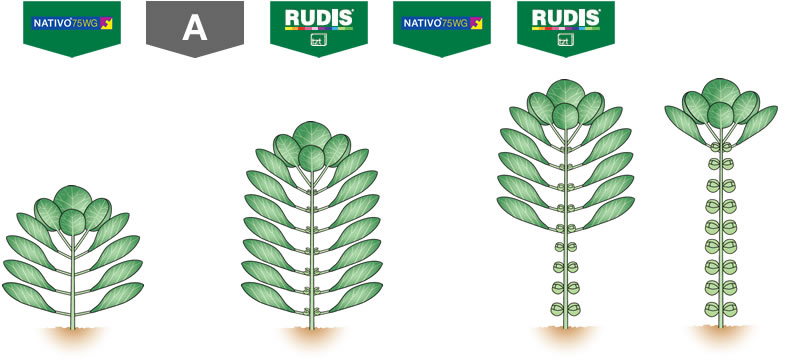
A: Alternative product with different Mode(s) of Action. Follow FRAC guidelines.
Light Leaf Spot
Warm, wet autumns are driving the spread of Light Leaf Spot (LLS: Pyrenopeziza brassicae) to the UK’s prime brassica-growing areas. LLS can severely depress crop quality, yield and revenue – particularly in long-season crops such as Brussels sprouts and storage cabbages.
Control is best achieved with preventative sprays as part of an integrated programme approach: curative applications are much less effective.
If white blister is present, add a specific oomycete curative fungicide, such as Infinito, to control the disease.
Autumn/winter cabbage
Disease at T1
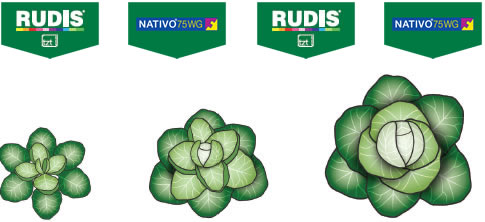
Application:
| Rudis | Nativo 75WG | |
| Rate of use: | 0.4 L/ha | 0.36 kg/ha |
| Max number of doses per crop: | 3 | 2 |
The first application is recommended before disease establishes in the crop. Follow with further applications of Rudis or Nativo 75WG at a typical spray interval of 21 days. A minimum of 21 days between applications is required when using the same product in a block spray. Apply Nativo 75WG at the end of a programme for lasting crop protection and better storage.
As part of a disease resistance management strategy, Nativo 75WG and Rudis should be used in a fungicide spray programme with other products based on different classes of chemistry.
Brassica leaf spot disease (Alternaria species, Mycosphaerella brassicicola) control
For control of these diseases or for curative activity against other target diseases, mixing Rudis or Nativo 75WG with an approved sticker/wetter adjuvant may enhance their activity.
White blister (Albugo candida) control
Nativo 75WG provides useful protection against white blister; for established infections use a specific oomycete curative fungicide such as Infinito (EAMU 20152557). Mix Rudis with an oomycete curative fungicide for control.
New transplants
Allow to establish before applying Nativo 75WG; there is potential for some growth regulation seen principally as a transient reduction in vigour of young plants.
Resistance management
Nativo 75WG contains trifloxystrobin, a member of the Qol group. In accordance with FRAC guidelines for pre-mix Qol fungicides, the number of applications of Qol-containing products should be no more than 50% of the spray programme.
Rudis contains prothioconazole, a member of the DMI group.
Use Rudis and Nativo 75WG as part of an Integrated Crop Management (ICM) strategy incorporating other methods of control, including where appropriate other fungicides with a different mode of action.
